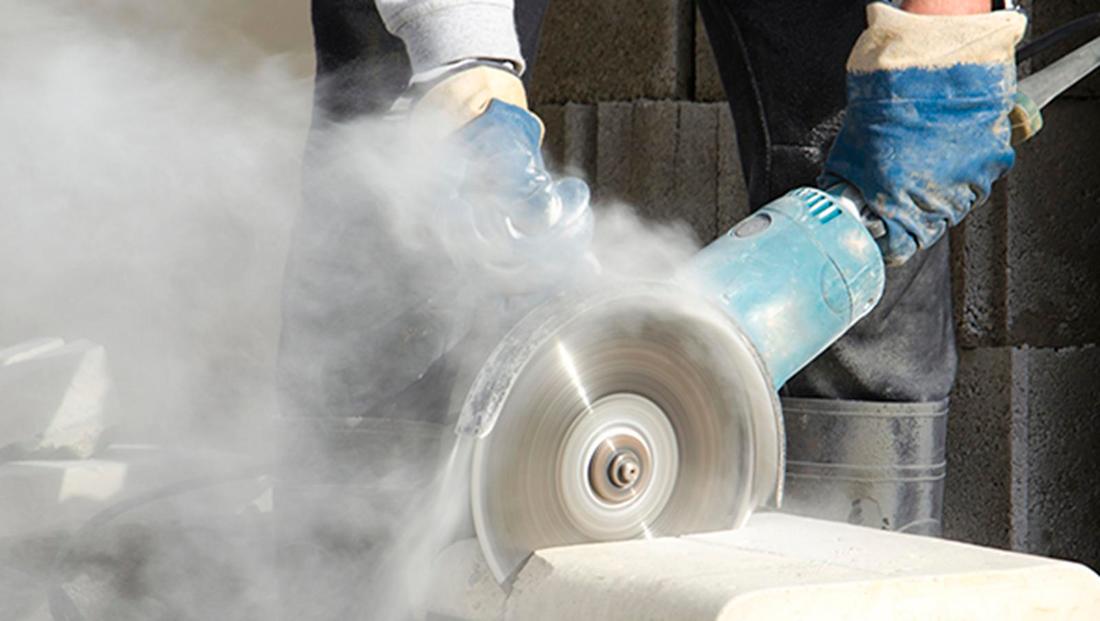|
There has been a lot of talk around the world lately about the dangers of Silica dust. So much so, the Health & Safety Authority have started to make a lot of noise about it too - and rightly so. I have been speaking to colleagues in the States who have told me that OSHA have really cracked down on the control of Silica dust and they believe that the industry evolving around the control of Silica dust will be bigger than the Asbestos industry. So, what is Silica dust? Silica is one of the most common naturally occurring elements on the planet. Silica, the mineral compound silicon dioxide (SiO2), is found in two forms -- crystalline or noncrystalline (also referred to as amorphous). Sand and quartz are common examples of crystalline silica. Many common construction materials contain silica including, for example, asphalt, brick, cement, concrete, drywall, grout, mortar, stone, sand, and tile. What are the dangers? Inhalation is the primary route of exposure to crystalline silica dust. For any kind of dust, there are different particle sizes. When dust is inhaled, its point of deposition within the respiratory system is very much dependent upon the range of particle sizes present in the dust. It is the respirable (smallest particle size) fraction of crystalline silica dust which is of critical concern for its health effects, since these can penetrate deep into the lung. Inhalation of fine dust containing crystalline silica can cause lung damage (silicosis), which in severe cases can be disabling, or even fatal. Silicosis is irreversible and treatment options are limited. Workers may develop any of three types of silicosis, depending on the concentration of airborne silica: • Chronic silicosis, which usually occurs after ten or more years of exposure to crystalline silica at relatively low concentrations. • Accelerated silicosis, which results from exposure to high concentrations of crystalline silica and develops five to ten years after the initial exposure. • Acute silicosis, which occurs where exposure concentrations are the highest and can cause symptoms to develop within a few weeks to four or five years after the initial exposure. Workers exposed to RCS are at increased risk of developing lung cancer. Similar to Asbestos, Silica dust can be transferred on clothing. The National Institute for Occupational Safety and Health (NIOSH) recommends that workers avoid bringing silica dust home from work by:
How do we protect our workers? • The first step to controlling crystalline silica is to carry out a Risk Assessment. • Seek to substitute the silica containing material with a suitable alternative if possible. • Use safe systems of work such as wet methods for dust removal/suppression. • Engineering controls such as Local Exhaust Ventilation (LEV) or containment measures should be used where appropriate. • Wear suitable PPE such as coveralls and appropriate gloves. • Respiratory Protective Equipment (RPE) should either be a FFP3 disposable respirator or a P3 particulate filter fitted to a half or full face mask to provide effective protection and be CE marked. All RPE should fit the employee correctly. • Any RPE worn should be properly fit tested. What are the legal requirements? The respirable fraction of the dust is invisibly fine and the OELV for Respirable Crystalline Silica (RCS) is 0.1mg/m3 averaged over 8 hours, as set down in the HSA Chemical Agents Code of Practice under the Safety, Health and Welfare at Work (Chemical Agents) Regulations 2001. A risk assessment under these regulations is required where exposures to RCS can occur. The Safety, Health And Welfare At Work (General Application) (Amendment) Regulations 2016 S.I. No. 36 of 2016 contains a Prohibition on silica – Regulation 128 “An employer shall ensure that no sand or other substance containing free silica is introduced as an abrasive into any blasting apparatus. Further information can be found on the Health & Safety Authority website and also the Health & Safety Executive website in the UK.
1 Comment
|
Neal ChristopherNeal is the MD and founder of Asbestos Safe. He has 20 years experience working with Asbestos and hazardous waste and decided to bring that experience to the safety industry. Archives
October 2019
Categories |



 RSS Feed
RSS Feed